How Somerset paved the way for UK farmers' markets
What started in Bath has grown into a national movement highlighting the shortcomings of industrially-produced food
1997: the year Harry Potter first captured childrens’ hearts and minds, Wi-Fi became available to the public, and Elton John’s ‘Candle in the Wind’ topped the UK singles chart. Yet, at the same time, and not nearly as well known, a revolution started to brew – one that would help regenerate local farming economies, and forever affect Britons’ relationship with their food.
This originated at Green Park Station in Bath, where (after a short run at the Parade Gardens), on a Saturday in September 1997, traders pitched up to sell items they’d made – a medley, in this case, including cheese, apple juice, vegetables, and microgreens – direct to the public. “A lot of people didn’t know what to expect,” says Kieth Goverd, who was there on the day selling his apple juice, and one of the initiators of the market itself. “They weren’t used to local producers being presented to them, and were amazed to find things that were easy to grow in the area.”
The idea – that of a ‘farmers’ market’ – was indeed pretty radical at the time. Since at least the ‘60s, supermarkets began to dominate how food was bought and sold in the UK and, until ‘97, any alternative means for producers to peddle their wares – without such influence or intervention from middlemen – directly to the public simply did not exist.
These days, farmers’ markets have become a lifeline for some producers – according to food charity Sustain, a farmer typically receives about eight pence of every pound spent in a supermarket; when they trade on a farmers’ market however, they get it all, albeit after any expenses such as stall fees and fuel costs. “For our pitch at Bath Farmers’ Market,” says Lynette Flanders, who co-runs Glastonbury Ferments with husband Mike, “it’s £35 a week.”
Needless to say, no one on the market’s management side is making a killing here, but then that was far from the reason for its inception. In response to Agenda 21 (a UN action plan encouraging local councils to, in part, proactively address social, environmental, and economic problems within their respective areas), Bath & North East Somerset Council wanted to ‘encourage the production and consumption of local food’. A farmers’ market, not dissimilar to those already popular in California, was how they’d do it.
The concept was welcomed – after its first year, Bath Farmers’ Market went from operating monthly to twice a month. Since 2002, it’s opened every Saturday, and on a good day gets 2,000 people through its doors.
Keith and his colleagues didn't know it then, but Bath Farmers’ Market would set the example for a nationwide movement eventually spawning 650 similar markets across the country. Continuing, that was, with the rest of Somerset, which in 1998 became home to the second (Glastonbury) and third (Frome) farmers’ markets in the UK.
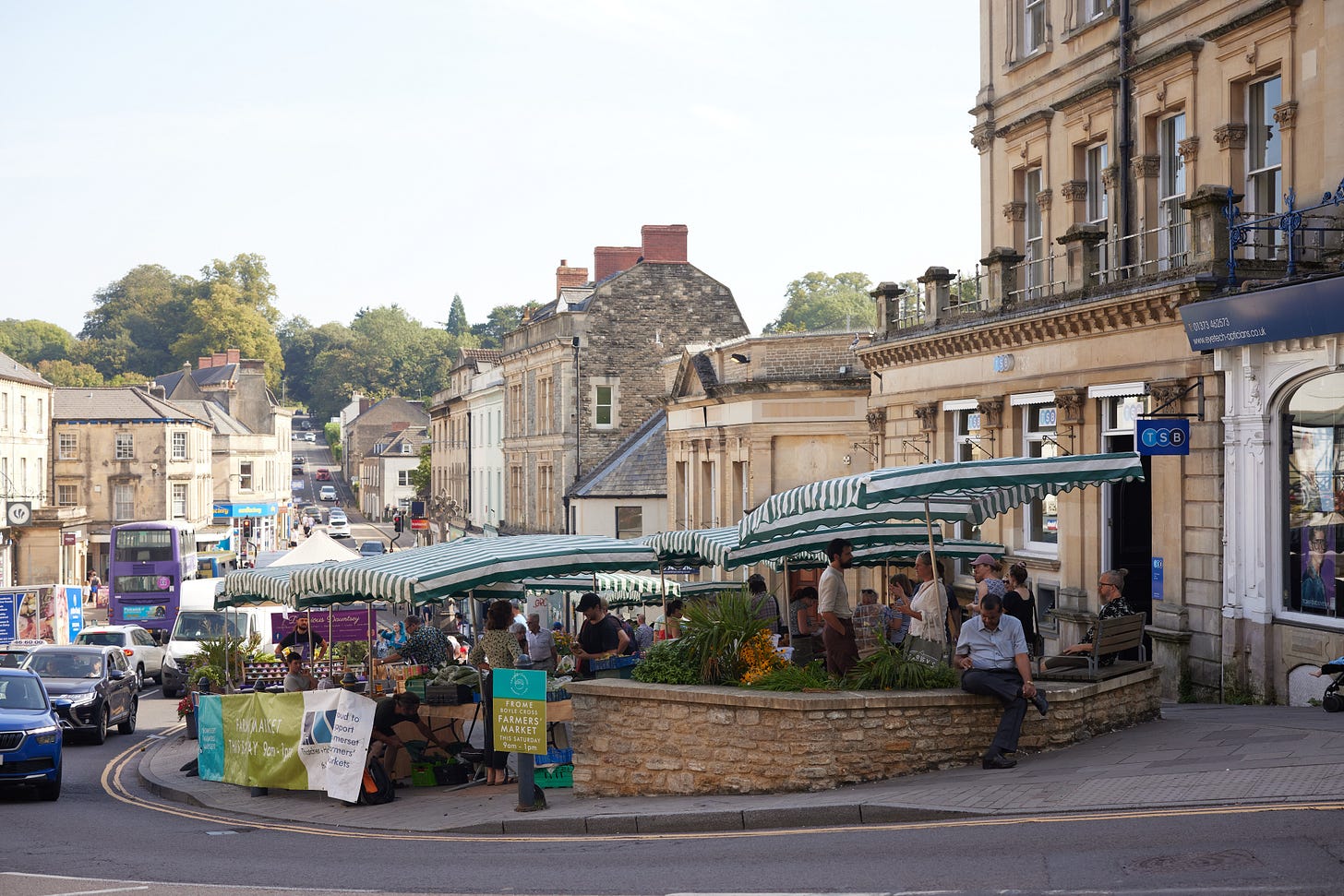
These were set up and supported by a committee that included Paul Sander-Jackson who, then a volunteer and later as part of Somerset Food Links, was commissioned by local councils to help develop and promote a healthy local food economy in the county. “[At Glastonbury], we had about 40 producers in the early days,” Paul says. “It took place in the St. John’s car park on a monthly basis.”1
Roger White, who Paul tasked to manage Glastonbury among other markets in Somerset, says they were “thronged with people” even in the early days of their existence, and would subsequently be a growing prospect to producers: “They'd say, ‘well, we've moved to Somerset or we've started [farming] because we hear there's farmers’ markets we can sell our produce at.’”
After Glastonbury, Paul and Roger helped set up markets in Wincanton, Wells, Yeovil, Crewkerne, Chard, Frome, and Axbridge, among others. In order to try and future-proof the markets, and run them collectively, they set up the organisation Somerset Farmers Markets (SFM), which – now in its 25th year – hosts hundreds of local producers across seven markets in the county.
Each is distinct in character, from Axbridge’s 25-trader market in the town's handsome 400-year-old square, to Nailsea’s 50-stall monster that takes over the high street once a month. All, though, have a sense of camaraderie among producers, which is the kind of thing Roger – now almost in his eighties – remembers since day one. “That camaraderie amongst stallholders was also infectious with the customers, who would come into the market and recognise there was a sort of a buzz, a community atmosphere,” he says.
Among other assets, it seems farmers’ markets have, to at least some degree, succeeded in helping regenerate local economies, and perhaps by accident even the complexion of Somerset’s towns. In the case of Frome, Roger wonders if this was achieved by the farmers’ market (originally in the Cheese & Grain, but now on Boyle Cross in the town centre) almost single-handedly. “Frome used to be a pretty rundown ex-industrial town,” he says, “but it's now become quite yuppie-fied. I was in Frome Museum recently and asked a volunteer there what caused the town to change. She ummed and ahed a bit, then said, ‘I think it may have been after the farmers’ market started, as it got into the press.’” Roger suggests that, as Frome is on the main train line from London, and the concept of local farmers’ markets in the UK was at that time only a year old, it wasn’t difficult for interested, somewhat monied individuals to go see what the fuss was about.
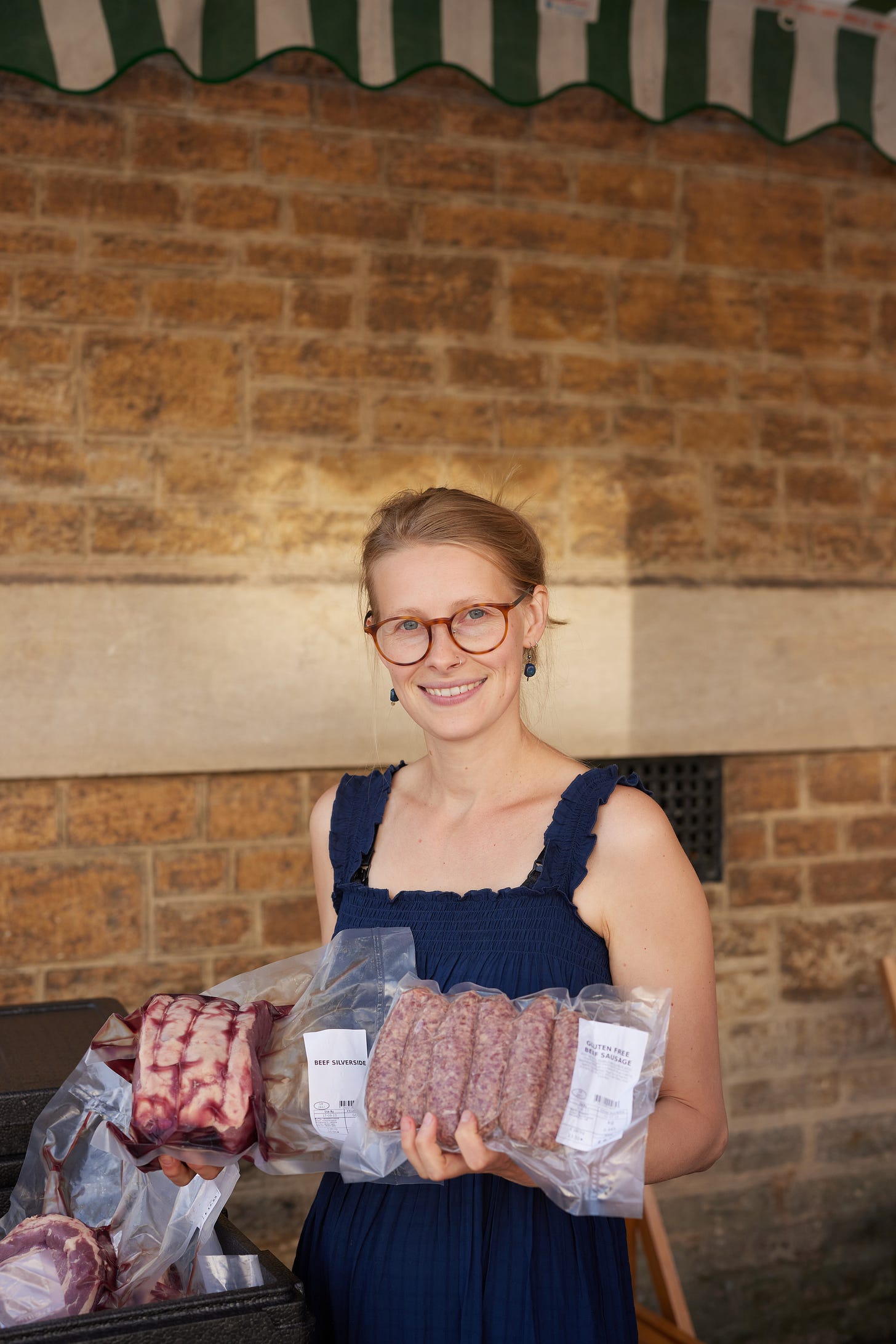
None of this is to suggest that farmers’ markets in Somerset haven’t had their downs as well as their ups – last year, SFM had to close their Burnham-on-Sea market due to unsustainable trader numbers, and this year were forced to relocate Crewkerne’s market – which similarly suffered from dwindling trader interest, but also proximity to road traffic – from the Market Square outside the Town Hall to Falkland Square shopping centre.
Both instances speak to the chicken-and-egg challenge of attracting shoppers and stallholders simultaneously. The former generally looks for a decent array of producers selling high quality produce, while the latter will only trade if there’s enough incentive to counter the various and often encumbering disincentives. “You don't get weekends,” Lynette tells me, this time while packing down her stall after a successful SFM market in Frome. “You have to work very hard as an independent small business, doing everything – the accounts, purchasing, marketing.”
“But then,” she continues, “we’re face-to-face with our customers. A lot of people haven't experienced fermented foods before, or have had a bad experience because it's been pasteurised, bulk-made stuff.” Lynette says she also likes getting to know “the other fabulous traders that become great friends and support,” and not losing out on a “big cut” from retailers like supermarkets.
It turns out that for the last 27 years, the idea has endeared itself to shoppers, too – supermarkets had offered somewhere to buy cheaper and cheaper for so long, it took something like farmers’ markets to remind us that, actually, we often prefer having somewhere to buy better.
Glastonbury no longer hosts a farmers’ market, but rather a generalist one run by Somerset Council
A version of this article appeared in Somerset Life’s October 2024 issue
Disclaimer: While I manage both Frome SFM markets, this article has been written with impartiality in mind as much as is realistically possible



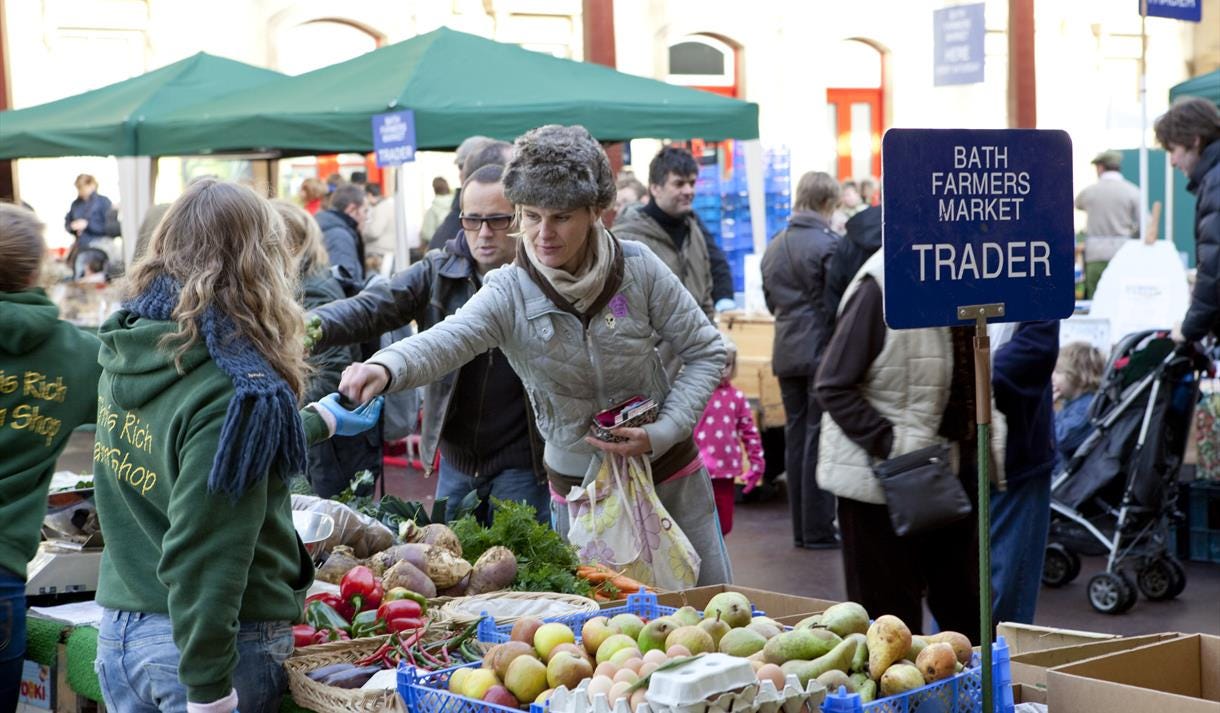
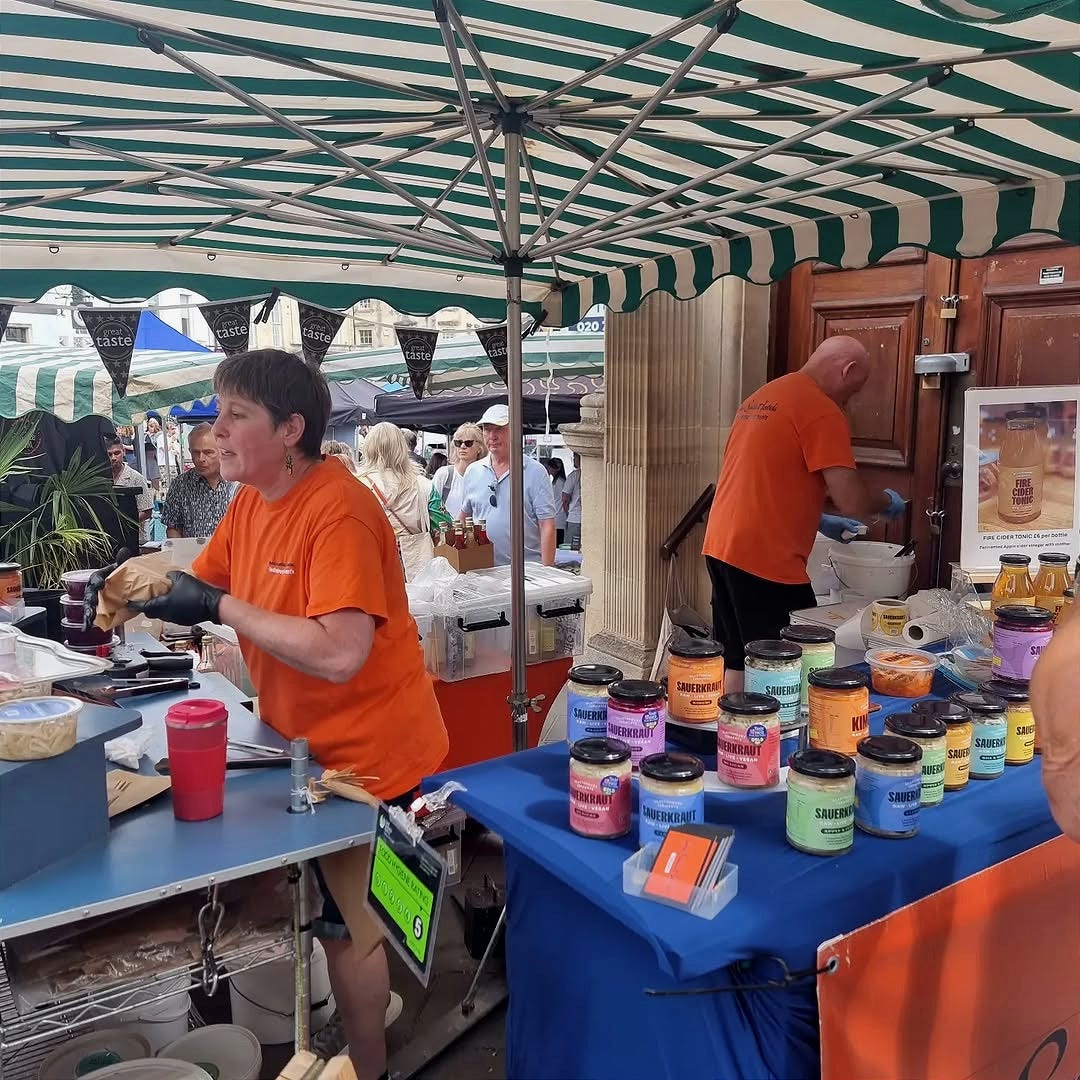
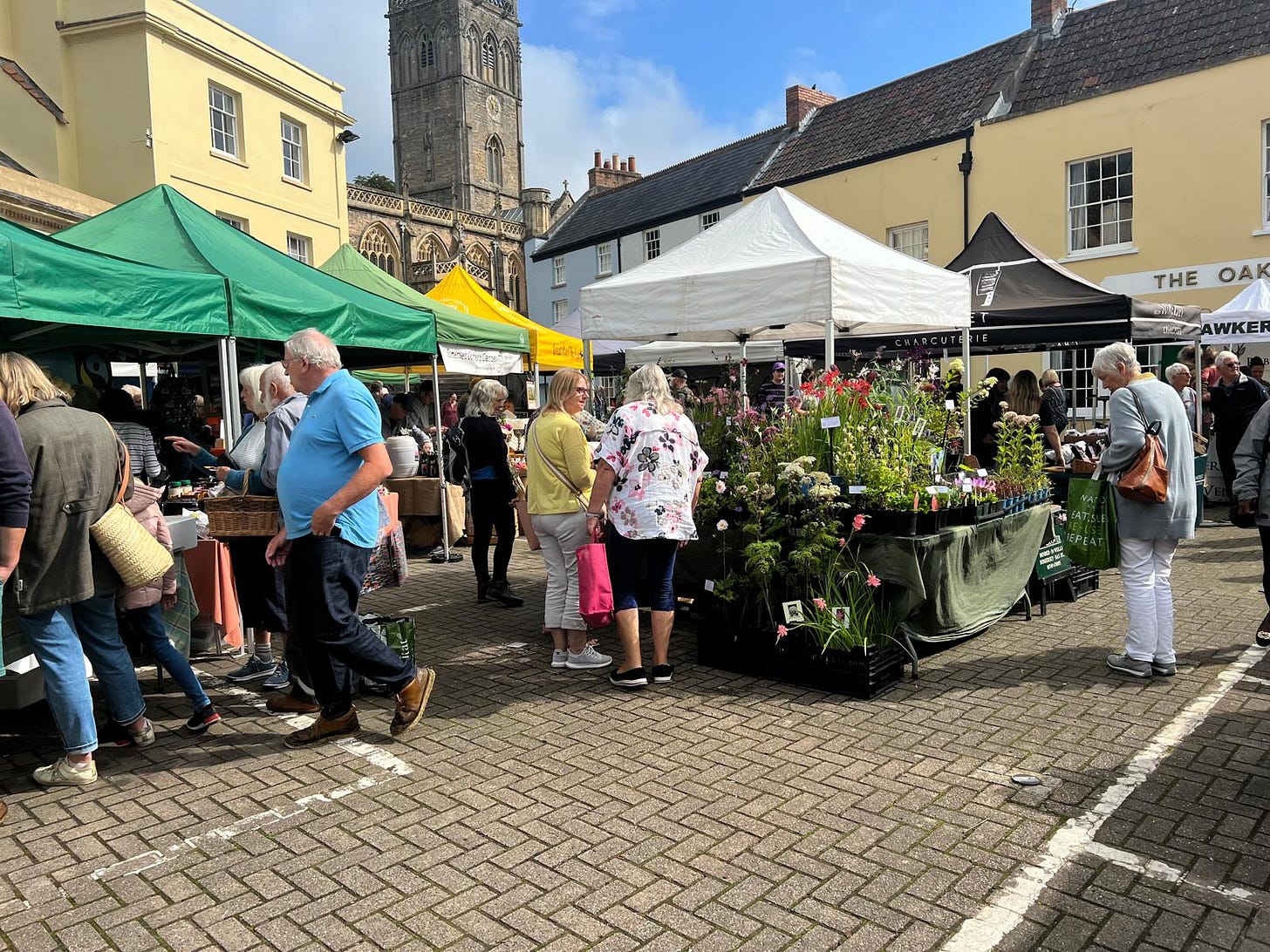
Our good friends Sarah May and Rob Weston ran the first Bath Farmers market. I was there and there was such an exciting feeling under the roof at Green Park station. I shot some video at the time - wish I could find it!!
Sarah and Rob have sadly both passed on to the great farmers market in the sky but their legacy lives on.